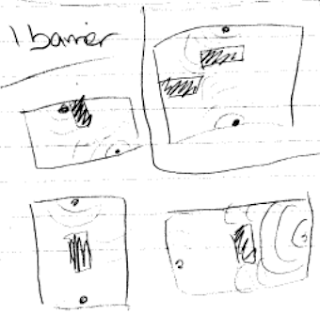There are three different kinds of faults, and three different kinds of stress. The different types can create mountains, valleys, earthquakes, tsunamis; a variety of different natural phenomena. The different stresses can cause different faults, which change the physical features of the land.
Stress is a force that squeezes or pulls crust rock. It continually adds energy to the tectonic plates, and that energy is stored, and builds up, until the stone eventually breaks or changes shape. Stress can work for over 1,000,000 years to change the shape of the original rock, and it either breaks brittle stone immediately, or bends them slowly. There are three kinds of stress; tension, compression, and shearing. Tension pulls apart the plates, making the rock in the middle thin. It is caused by two plates moving apart. Compression is when the tectonic plates are squeezed together, so that they either fold or break. It is caused by one plate pushing the other. Shearing is when two masses of rock slip in opposite directions. This type of stress causes rock to either break and slip apart or change shape.
Faults are caused when too much stress builds up in a rock until it breaks. Most faults occur along plate boundaries, where their forces either push or pull at the rock on the crust until it breaks. The different types of faults are normal faults, reverse faults, and strike-slip faults. A normal fault happens when tension pulls rocks apart. The fault breaks at an angle, where one rock slides up, and the other goes down. The rock that's higher up is called a "hanging wall," and the one below it has been dubbed "foot wall." A reverse fault is caused when the earth's crust is pushed together through compression. The reverse fault ends up basically the same way as a normal fault, it's just that the blocks move in opposite directions. A strike-slip fault is caused by shearing tectonic plates. Two rocks on either side of each other slip past each other sideways, without very much up-and-down motion.
Stress is a force that squeezes or pulls crust rock. It continually adds energy to the tectonic plates, and that energy is stored, and builds up, until the stone eventually breaks or changes shape. Stress can work for over 1,000,000 years to change the shape of the original rock, and it either breaks brittle stone immediately, or bends them slowly. There are three kinds of stress; tension, compression, and shearing. Tension pulls apart the plates, making the rock in the middle thin. It is caused by two plates moving apart. Compression is when the tectonic plates are squeezed together, so that they either fold or break. It is caused by one plate pushing the other. Shearing is when two masses of rock slip in opposite directions. This type of stress causes rock to either break and slip apart or change shape.
Faults are caused when too much stress builds up in a rock until it breaks. Most faults occur along plate boundaries, where their forces either push or pull at the rock on the crust until it breaks. The different types of faults are normal faults, reverse faults, and strike-slip faults. A normal fault happens when tension pulls rocks apart. The fault breaks at an angle, where one rock slides up, and the other goes down. The rock that's higher up is called a "hanging wall," and the one below it has been dubbed "foot wall." A reverse fault is caused when the earth's crust is pushed together through compression. The reverse fault ends up basically the same way as a normal fault, it's just that the blocks move in opposite directions. A strike-slip fault is caused by shearing tectonic plates. Two rocks on either side of each other slip past each other sideways, without very much up-and-down motion.


